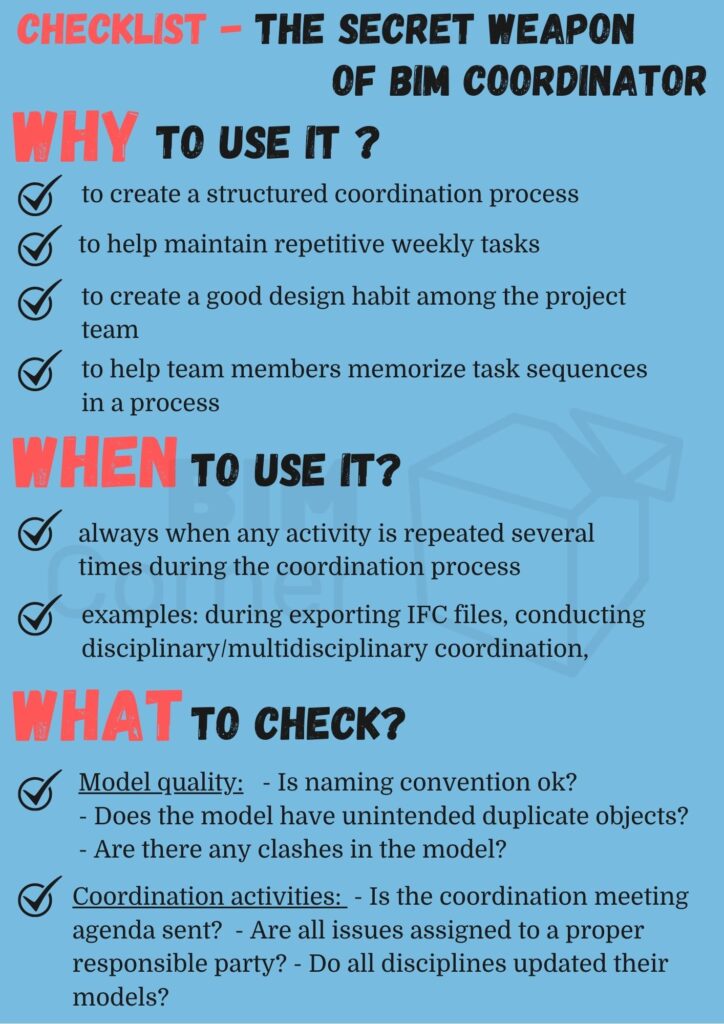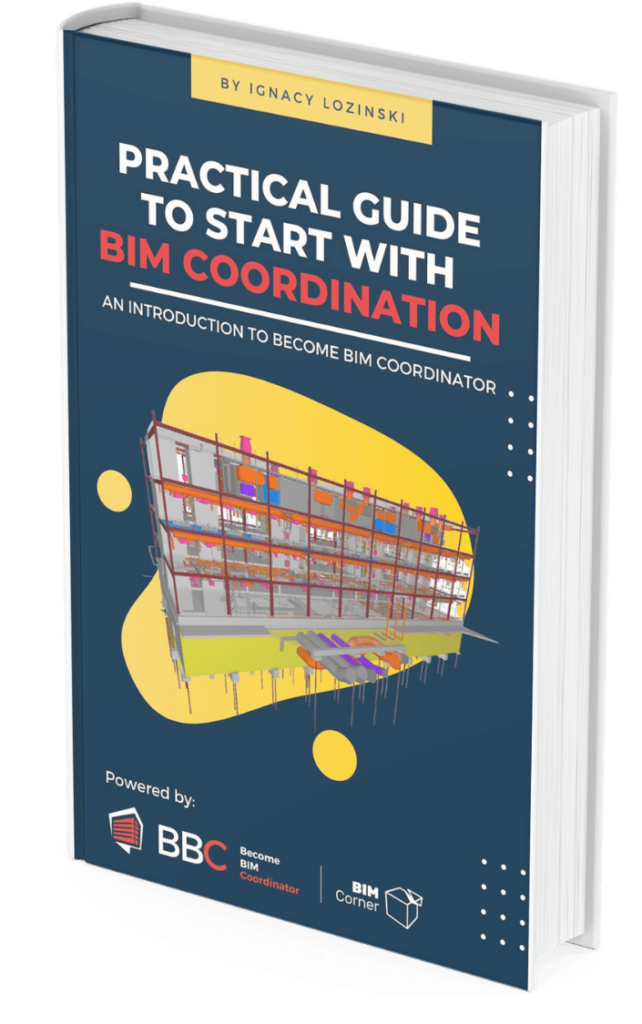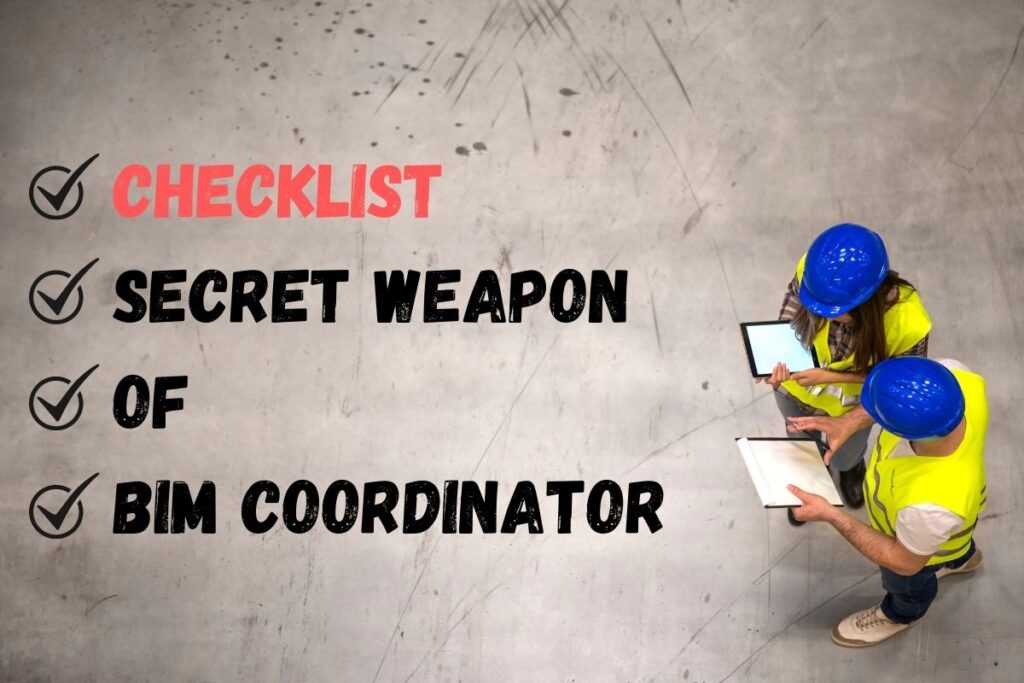Imagine you are inviting your friends over for dinner on Friday night. It’s quite natural that you go shopping a few hours before the meeting to prepare something good for a meal. You have already thought about what you will eat, so you go to the store with a pre-prepared list of products.
Ok, shopping done, what’s next … now it’s cooking time. You grab the the recipe you have spotted somewhere before and start cooking. One by one you go through the checklist as written in the recipe. You don’t want your dinner to be a total disaster, do you? After a while, dinner smells and tastes great. The guests come and you guys start the evening. Everyone enjoys your dinner – Great food, nice atmosphere – what not to like, right ? .
You are probably thinking ……. Wait a minute, am I really on the BIM blog? What this story is all about? Just give a sec and stay with me 🙂
Notice how often we use lists in our lives to help us carry out all kinds of projects. In this prosaic case, the project was a dinner, and our lists helped us choose the right products and prepare the food correctly.
In BIM Coordination, as in everyday life, we also use checklists. They have several purposes, but most of all they help to tame the information chaos and structure the project coordination process. In this article, I going to reveal when and how to use them and what they might look like on a construction project. Let’s begin.

DO YOU WANT TO BECOME A BIM COORDINATOR ? I AM BUILDING AN ONLINE PROGRAM TO BOOST YOUR CARRER IN BIM
BIM Coordination and checklists
In a properly implemented BIM project, the responsibility of the client is to precisely define the requirements for the content of BIM models at the appropriate stages of the project implementation. These requirements are carefully analyzed by the design team and contractor. As a result of those analysis BEP is created (more about BEP here).
This document is a map and, at the same time, a manual describing how BIM will be implemented in the project in order to achieve the goals set by the client. The BIM Coordinator, as one of the people responsible for creating this manual, is responsible for ensuring the correct implementation of BEP and controlling the quality of the created documentation.
Checklists for the BIM Coordinator are nothing more than a tool thanks to which he is able to standardize the performance of repetitive activities and verify the content of BIM models at a specific stage of project development. Depending on the type of the project, there may be several such lists or just only one.
Let’s move on to a practical example where I will show you when to apply such a checklist.
So when to use checklists?
We will demonstrate the application of the checklists using a simplified BIM coordination workflow scheme:
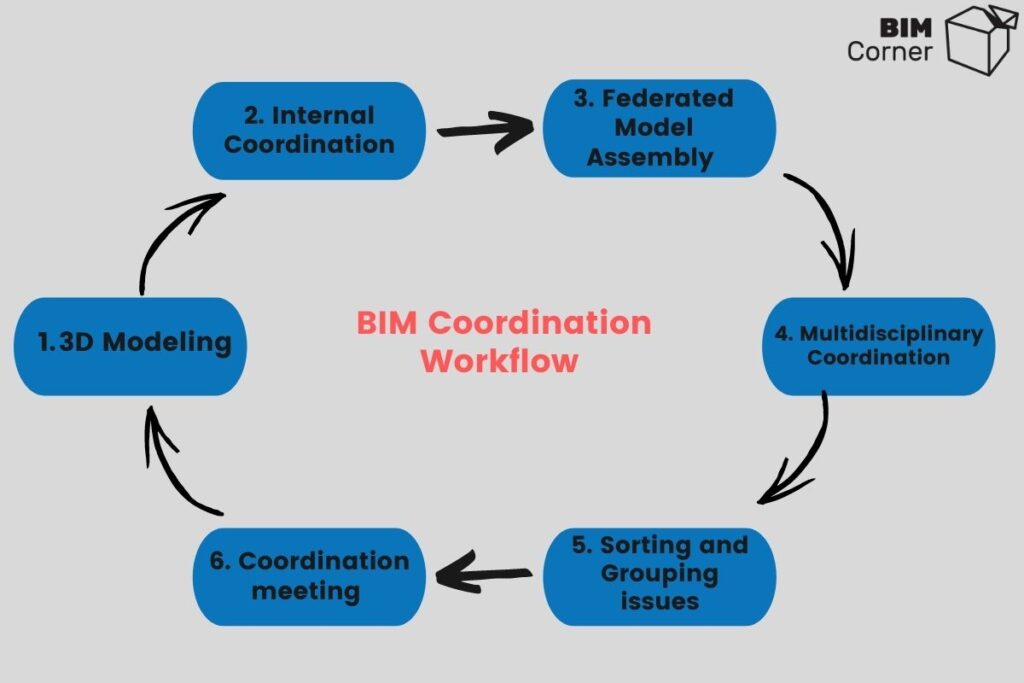
First, we start with 3D Modeling – In this step, each trade creates its own 3D geometric model and then enriches it with the necessary information. When we come to the stage of models’ advancement in which internal coordination should be performed, a checklist comes in handy.
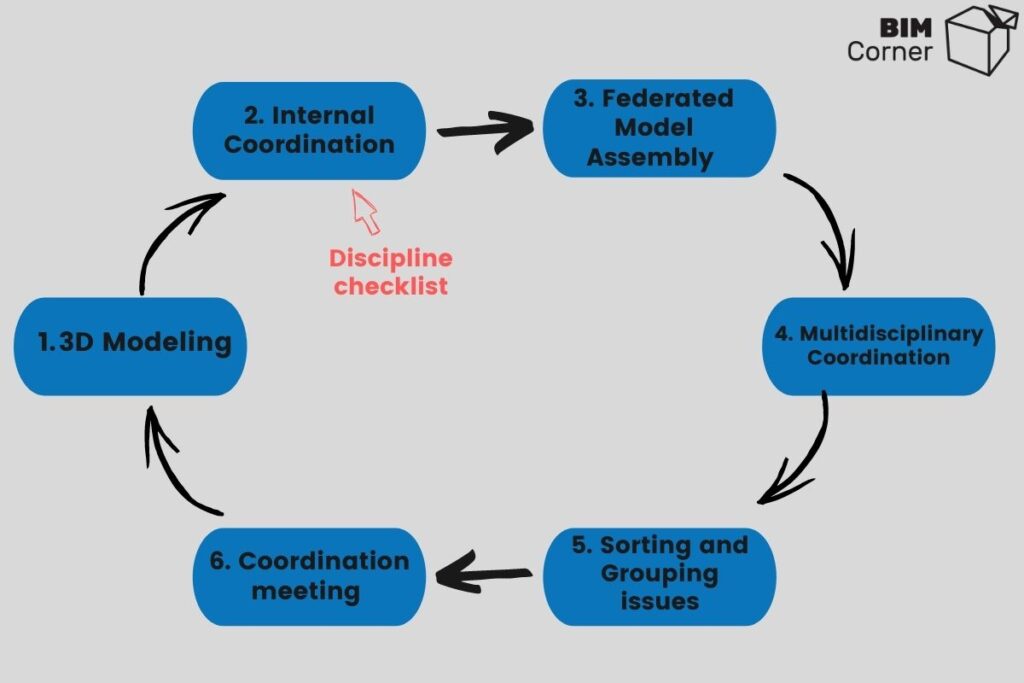
Before the models are sent to the BIM Coordinator, discipline carry out their coordination to make sure that:
the model is free from internal collisions, there are no duplicating objects, model is correctly located, the information contained in the model complies with BEP guidelines, IFC mapping attributes are set correctly, objects naming convention is ok, etc.
In a word, there is a lot of things you might want to check.
So, it’s a good practice to create a checklist for each dicipline. Before they ship the model onwards, each trade goes throught a checklist point-by-point and verifies if the model delivery meets quality criteria. This list is usually prepared by a BIM Coordinator who knows the exact model requirements discribed in BEP.
Let’s look at how such a checklist might look like:
Example of an Internal Coordination Checklist:
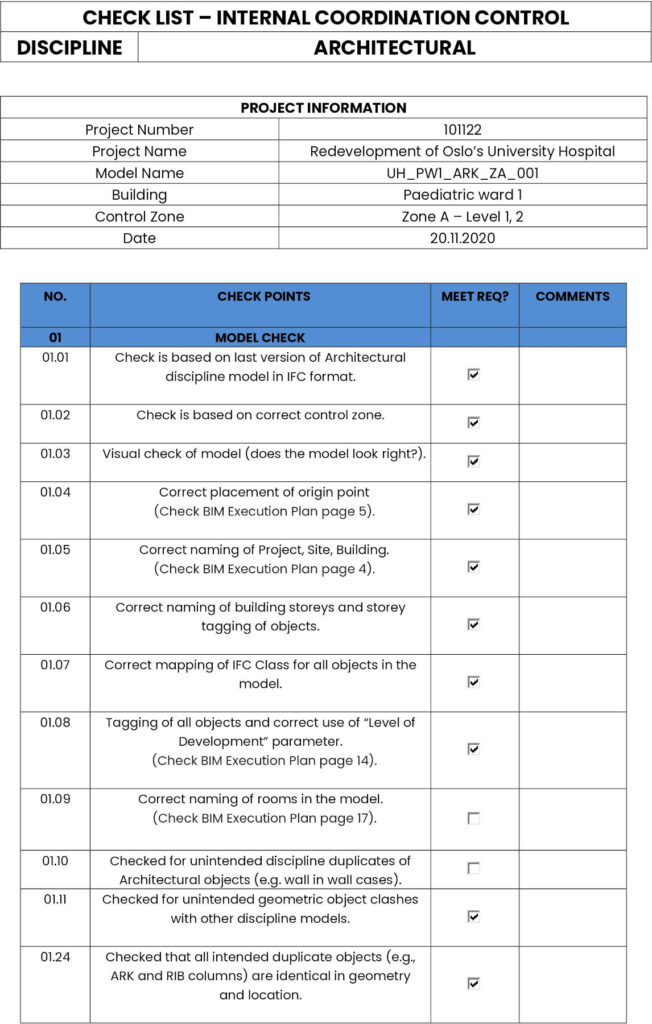
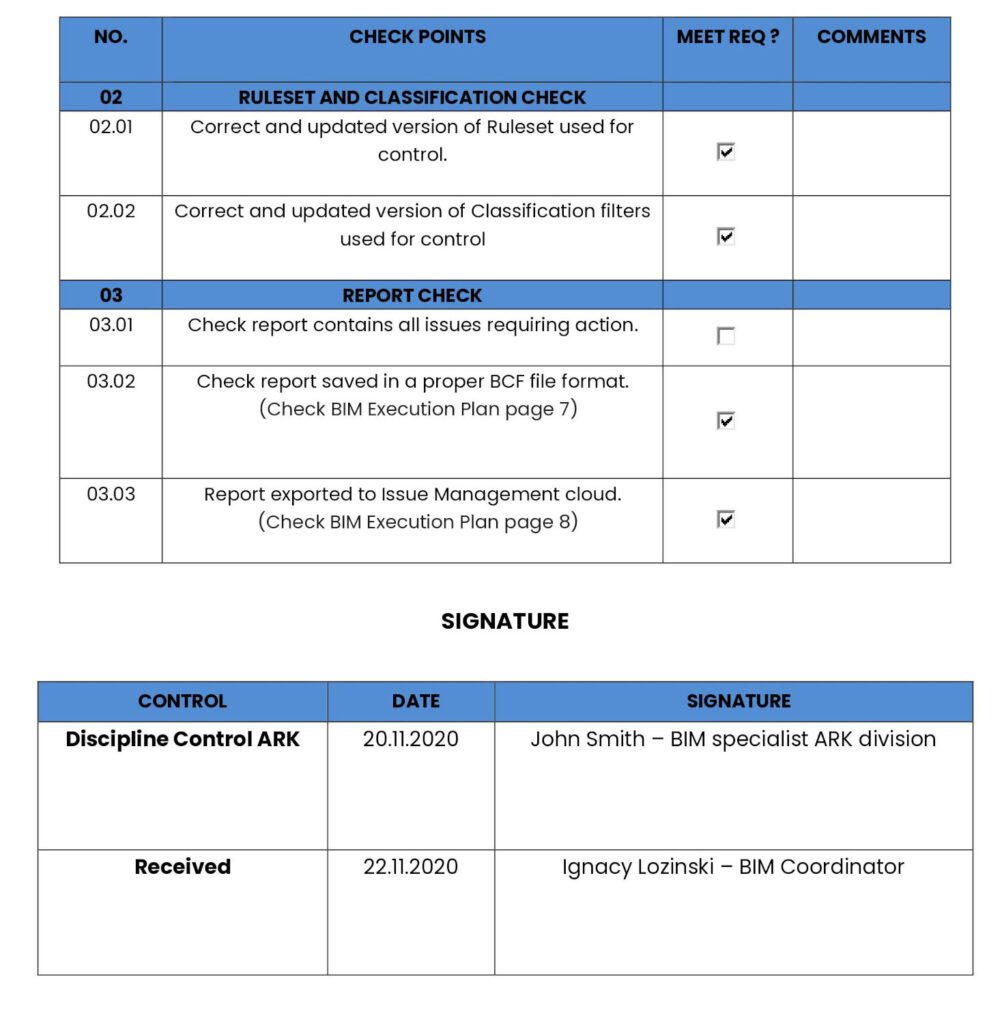
As we can see, at the top of the list it is worth including basic project information, such as: project name, model name, the area covered by the checklist, etc.
Below this information is a checklist. Remember, each project has different BIM requirements, so the list must be prepared for these requirements. It is not worth copying it thoughtlessly from other projects.
On the list you can often find check points like :
- Does the model have the correct name?
- Is the model properly located along the project coordinates?
- Are the appropriate model parameters filled in?
- Are there duplicate objects in the model?
Two columns should be added to the right side of the list. In the first one, we mark whether a given point meets the requirements, and in the other, we add a possible comment to describe the actual state.
At the end of the list, I recommend that you add a space for the signature of the person responsible for carrying out the check. In case of any ambiguities, BIM Coordinator will turn to this person to clarify uncertain points.
Multidisciplinary Coordination and BIM Coordinator's Checklist
Let us return to our BIM Coordination workflow. We are already after the internal coordination and it’s time for the next step.
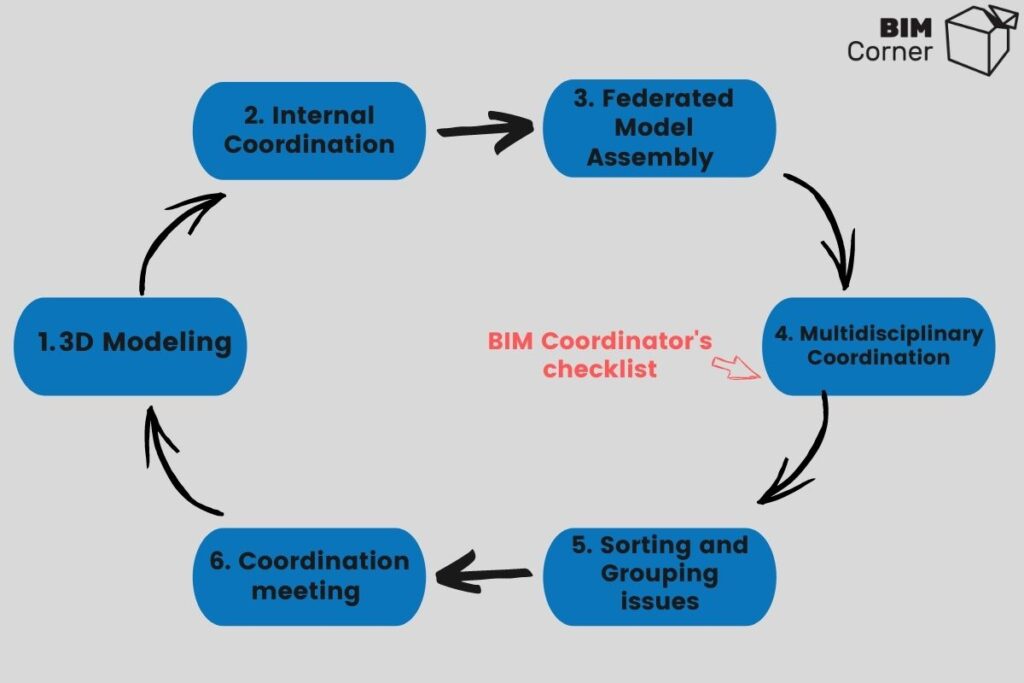
This type of coordination is usually carried out by the BIM Coordinator, who previously received trade models and combined them into federated one in the coordination program (more about Multidisciplinary Coordination here). Together with the models, the BIM Coordinator receives checklists filled in by BIM specialists from each discipline. He/she reads all comments and checks what has been done and what has not. This enables him to adjust the scope of coordination accordingly.
Let me give you an example: The BIM coordinator receives a checklist from the ventilation discipline. He is informed that they have not managed to improve the model and there are still many collisions with the plumbing systems. Does it make sense, for the coordinator to do a clash detection between ventilation vs plumbing, since he knows that the first model is not ready for it yet? Answer is no. Thanks to the checklist, it changes the scope of coordination and omits the mentioned point.
The BIM coordinator’s checklist may be more general and cover the entire coordination process, thus not referring to individual model deliveries. Of course, it all depends on the size of the project. If it is small, it is very possible that the coordinator, in addition to multidiciplinary coordination, is also responsible for internal one. Then its checklists will look different than on a project with a larger cubature and a more complex organizational structure.
BIM Coordinator’s checklist can be created in the form of questions. A few examples are below:
- Have I received all current models from each discipline?
- Have I checked comments from internal checklists?
- Do all issues have only one person responsible for resolving it?
- Have I prepared a report for the coordination meeting?
- Have I sent the meeting agenda for all meeting members?
Example of a BIM Coordinator's checklist:
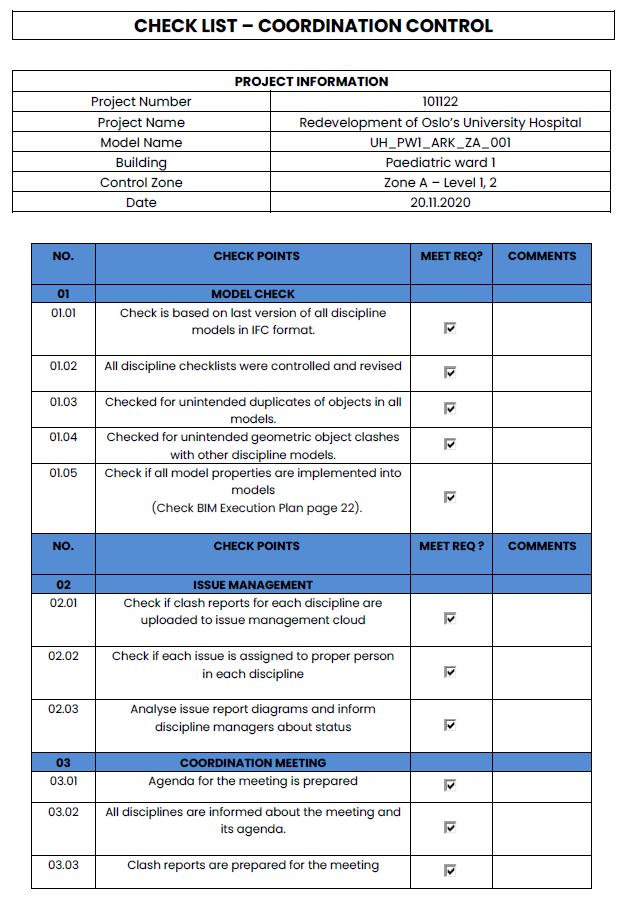
REMEMBER TO REGISTER FOR WEBINAR
24th NOVEMBER at 20:00 CET
10 TIPS TO IMPROVE YOUR BIM COORDINATION PROCESS
All registred will receive 
 GIFTS
GIFTS
MIND MAPS AND WORK FILES
Summary
In today’s article, I showed a simple BIM coordination workflow and suggested when during this process it’s worth creating checklists. Of course, their use might be slightly different depending on the project. You should always remember not to follow blindly by someone’s examples, and adjust coordination methods to your projects current state.
As you can see from the above-mentioned examples, checklists give the BIM Coordinator more control not only over the quality of the model but also over whole coordination process. Thanks to them, he/she can see which disciplines are lagging behind in comparison to others and using this knowledge find proper soultions at an earlier stage of project developement.
If you haven’t used the checklists in your coordination process yet, hopefully after today’s reading, you’ll start using them more and more.
